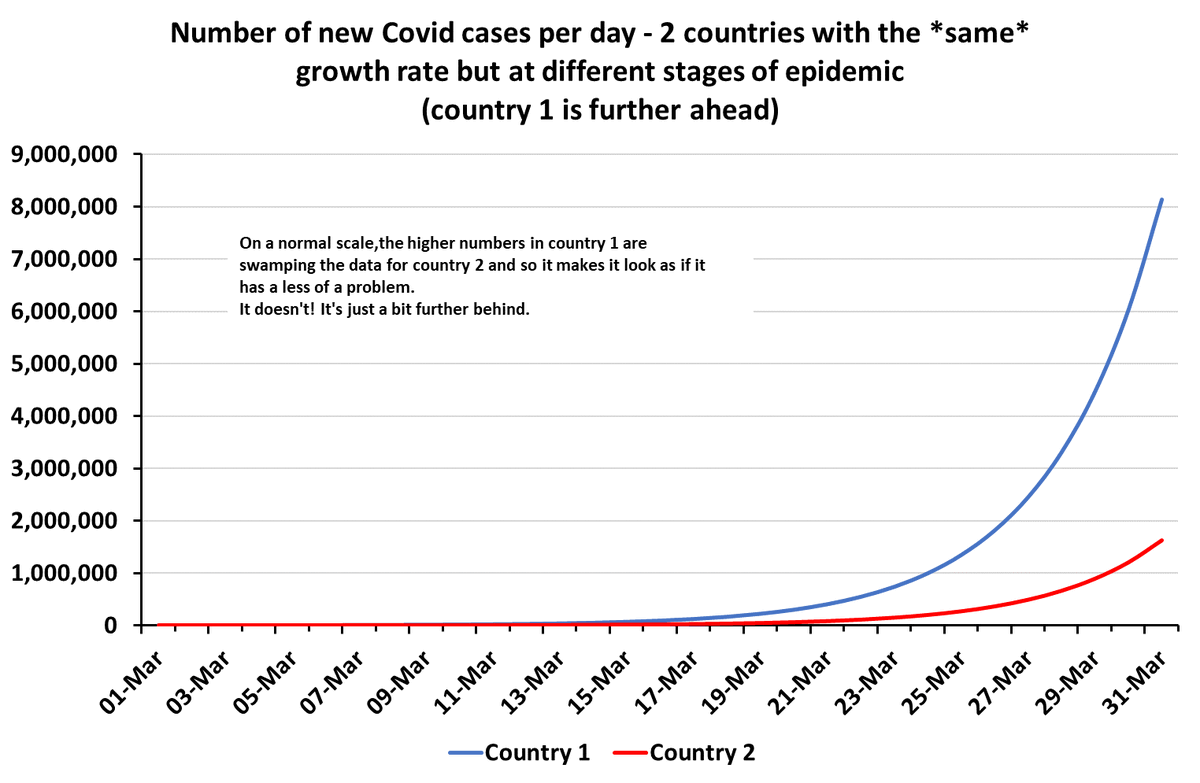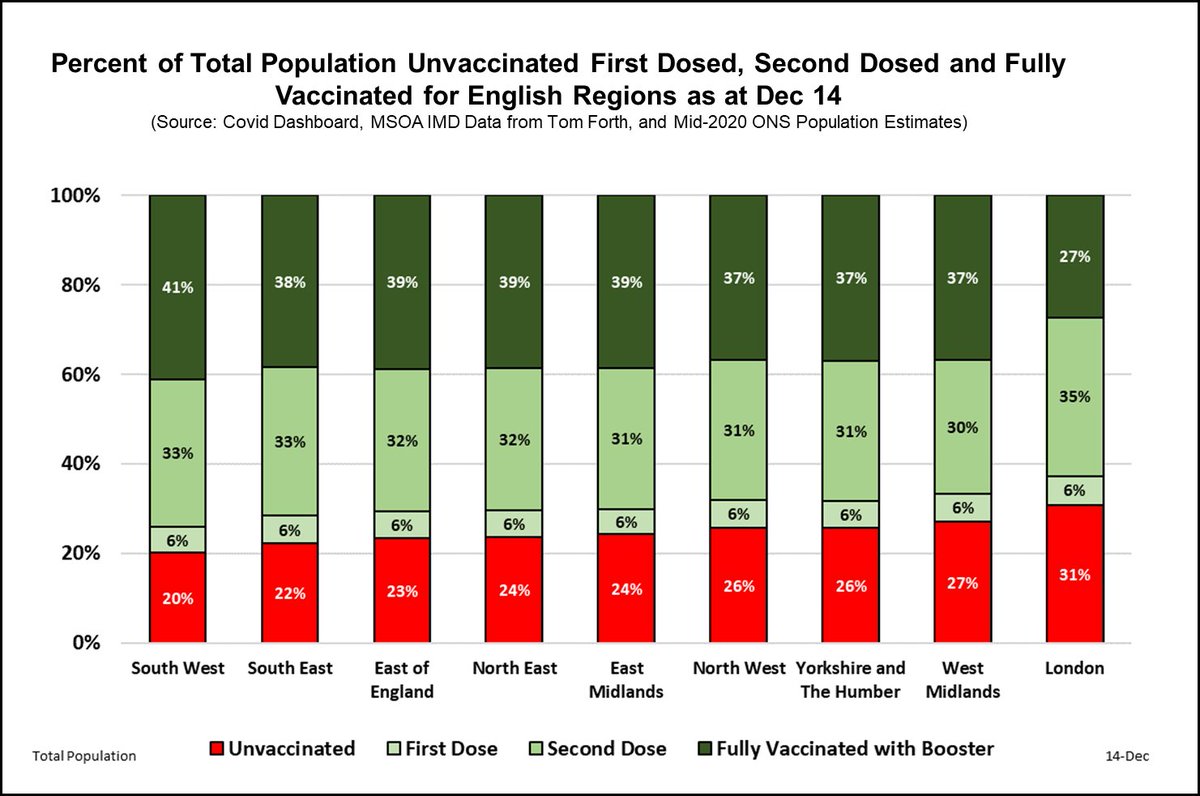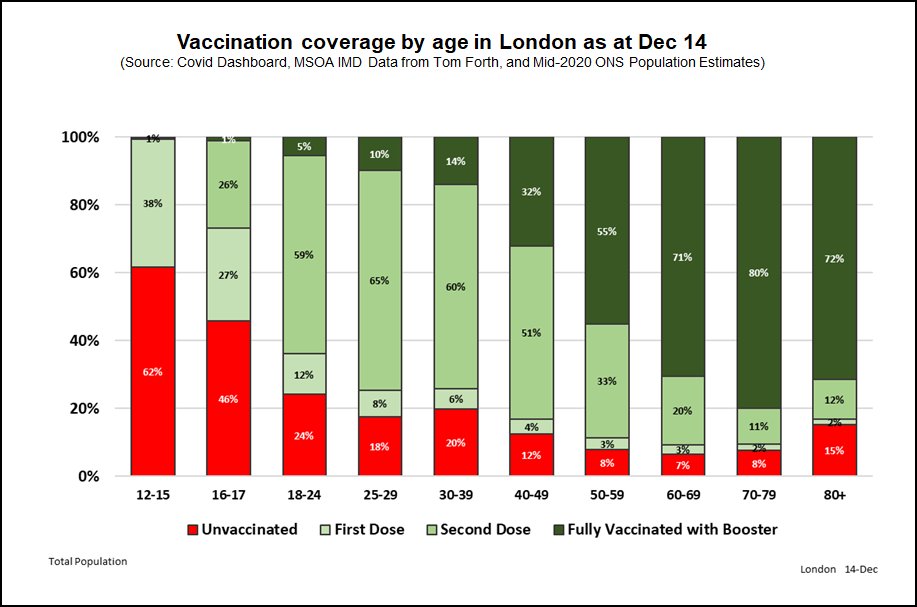
Was going to do a quick pre-xmas thread on where we are but SAGE minutes from their meeting yesterday covers all my points!
So here is a whistestop tour of the main bits
Omicron Growth might be slowing, but only from ~2 day doubling to ~3 day doubling. So still growing fast.
So here is a whistestop tour of the main bits
Omicron Growth might be slowing, but only from ~2 day doubling to ~3 day doubling. So still growing fast.

Not clear why growth is slowing: likely combo of more cautious behaviours, Plan B (e.g. work from home), moving to different age groups, more reluctance to test 

Number of people in hospital with Omicron doubling every 4 to 5 days – this is rapid and so far they are younger. Also increases in transmission within hospitals. SAGE expects large increase in admissions as older people get infected over Christmas ☹ 

There is increasing evidence that Omicron *outcomes* are milder than Delta. How much is intrinsic to the virus, or that Omicron infects many more with vax or prev infection (with milder disease) is unclear.
Many omicron infections simply would NOT HAVE HAPPENED with Delta.
Many omicron infections simply would NOT HAVE HAPPENED with Delta.

However sheer numbers of infections remain important.
For the NHS – what age groups they happen in and how much a waning booster protects against hospitalisations (hopefully a lot) is crucial.
Timing and peak of (hosp) wave depend on these factors.

For the NHS – what age groups they happen in and how much a waning booster protects against hospitalisations (hopefully a lot) is crucial.
Timing and peak of (hosp) wave depend on these factors.


The hosp peak might still be as high as previous peaks (very very bad for NHS). The sooner interventions happen to prevent infection the better - particularly if they stop older people getting infected. 

DO NOT READ TOO MUCH INTO NUMBERS THIS WEEKEND.
Test seeking, test processing and data updates all go screwy over Christmas – we have to wait till next week now.
Plus the impact of Christmas mixing won’t be seen until end of the year at the very earliest.
Test seeking, test processing and data updates all go screwy over Christmas – we have to wait till next week now.
Plus the impact of Christmas mixing won’t be seen until end of the year at the very earliest.

Finally, wishing you all a happy (and safe) Christmas.
Please test regularly using LFDs and don't mix if positive OR if you have *any* cold like symptoms or otherwise feel ill.
And if you are eligible, get a booster! /END
Please test regularly using LFDs and don't mix if positive OR if you have *any* cold like symptoms or otherwise feel ill.
And if you are eligible, get a booster! /END
PS minutes here gov.uk/government/pub…
• • •
Missing some Tweet in this thread? You can try to
force a refresh





















